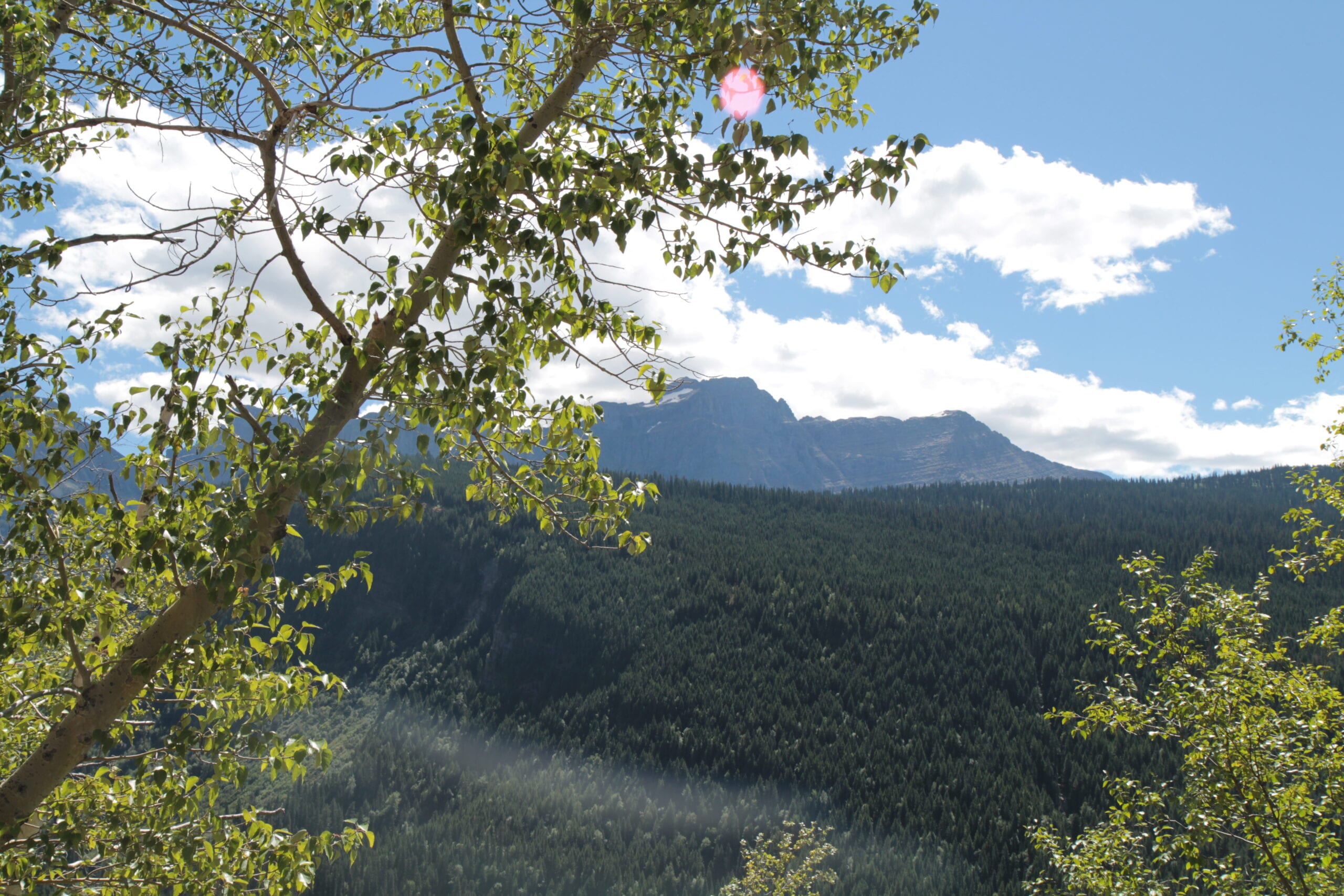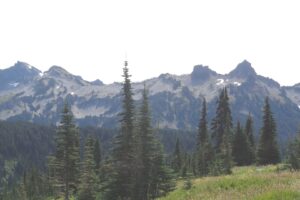Hiking etiquette goes a long way on the trail. If you’re new to hiking or just need a refresher, there are a few basic etiquette rules you should follow when you’re hiking. This guide also includes an update on etiquette due to the pandemic.
Friendly Greetings
If you’ve walked down a busy city street, you know that most people just pass by each other without acknowledging one another. It’s not the same on the trails. I’ve found that most people are extremely friendly on the trails. Most people will say “hello” or “good morning” when passing by.
The courteous thing to do is to respond in kind. I know that some people prefer to zone out while on the trails, especially if you’re introverted, but if someone does offer a greeting, you should offer a greeting in return. It’s just the polite thing to do.
Move Over
Some trails you hike will be really wide. Other trails can be extremely narrow. Some trails are so narrow that they are only wide enough for one person at a time. So when there are others coming from the opposite direction, one person will have to move over to let the other one pass.
Most trails have built in spots just for this purpose. You’ll notice little “pull over” spots to the side periodically throughout the trail.
If you see traffic coming towards you, look for a “pull over” spot. Pull over, and let the traffic pass. Along these same lines, if you are taking your time along a trail, and other hikers are gathering up behind you, pull over, and let them pass ahead of you.
Also, uphill hikers have the right of way. If you’re headed downhill, let the opposite traffic pass.
I always prefer to hike at a slower pace and stop to take photos. And if you’re the same, each time that you stop, just move to the edge of the trail so that traffic can pass.

Say Thank You
Just as it is polite to move over and let others pass, it is also polite so say “thank you” if someone is stopping to let you pass. Likewise, you will often receive a thank you when you let someone pass by.
Mask Up
While this may not always be a permanent thing, I do feel that it is currently relevant. Some states have mask orders and some do not. But most of the National Parks are requiring masks in public places such as the general stores and restrooms. They do not specify whether or not to wear them while hiking.
However, I noticed about 75% of hikers wearing some sort of mask or neck gaiter. Hiking can be hard on the lungs, and it is made even harder when you are at higher elevations. Wearing a mask can make breathing even harder, especially if you are doing a hike involving switchbacks with a high elevation gain.
I actually did keep my mask down on my chin during switchbacks and any time I needed to catch my breath. I know masks are a touchy subject, however, if you notice people coming towards you from the other direction, and they either already have their mask up or are pulling it up, the courteous thing to do is to pull yours up in return.
If you do not want to pull up your mask or don’t have one handy, you can turn your head “off trail” while they pass.
I actually had to do this a couple of times while I was stopped and trying to catch my breath on one of the trails. No one uttered any comments or got angry on either side of the issue. Everyone just tried to be respectful.
Help One Another
Hikers look out for one another on the trails. If someone is in trouble, other hikers will help out. If someone blows a whistle in distress, other hikers will come running. And if someone is hurt, other hikers will assist in getting help or treating the injury. It’s an unspoken sense of community while you’re on the trail.
You should also let other hikers passing by know if there is danger ahead of them. On a hiking trip to Grand Tetons National Park, a bear had wandered onto the trail. Passing hikers stopped to let us know the bear was up ahead. And luckily, park rangers were already responding to the issue by the time we reached that part of the trail.

Pack it in Pack it out
One of the most basic rules of any national park is that if you bring it in, you must bring it out. Don’t litter. Don’t leave behind food wrappers, orange peels, sunflower seeds, or any other food item.
If you have to go to the bathroom while hiking, don’t leave behind toilet paper, even if your plan was to bury in a hole. Most backpackers carry a plastic bag just for this purpose and throw it away when they get back to a trash can.
Going to the Bathroom
Even if you go to the bathroom before you start on the trails, you may sometimes have to go while you’re on the trail. If you do, try to go at least 200 feet away from the trail and find a secluded spot behind trees. But also use common sense if that’s not an option. If 200 feet leads right off the side of a mountain, do your best to find an appropriate spot.
Leave No Trace
You’ll see this saying posted in many places. You shouldn’t take anything from the National Parks. This includes, flowers, rocks, sand, or plants. In many cases this is illegal. Some exceptions are made for berries and seashells.
Don’t Vandalize
You’ve probably seen videos of bad tourists sitting or standing on pieces of art in museums in an effort to get the best selfie only to end up breaking priceless statues. Bad tourists have also defaced things inside the national parks.
Do not carve your name into anything including trees and rocks. Do not spraypaint anything. And do not climb on top of tall boulders. A group of hikers destroyed a balancing rock in Cape Kiwanda, Oregon in 2016 by intentionally pushing it over. You should always leave the trails just the way you found them. (Unless you find trash on the ground in which case you should pick it up and throw it away properly.)

Stay on the Trails
Stick to the designated paths. Some areas in the national parks are extremely delicate. Most of the time you will see signs asking you to stick to the trails. In Glacier National Park, parts of the tundra are so fragile that they have built wooden walkways along the Hidden Lake trail so that you do not trample the vegetation.
At Yellowstone National Park, many areas have wooden walkways that you need to walk on due to the constant seismic activity and sulfur that rises from the ground. Staying on the trails is not only the safe thing to do, but it’s the respectful thing to do.
Don’t Feed the Animals
Animals can be cute but it’s not a good idea to feed them. While that cute little chipmunk or squirrel may seem small and innocent, they can still bite. The more that people feed them, the bolder they become with humans, which then leads to them becoming more aggressive in their efforts to get food.
Wild animals can still carry diseases as well. Some animals have even been known to still carry the plague, as in the bubonic plague that killed millions of people in the middle ages.
Leaving food close to trails, encourages animals such as bears to stay close to the trails, which then endangers hikers. If bears begin to associate humans with getting food, they will then expect all humans to have food on them. And if the humans do not, the bears can become aggressive.
Bears that become too “comfortable” around humans are often euthanized in order to protect park visitors. So please don’t feed the animals.
These basic etiquette rules should be practiced any time that you are on the trails. While some of these rules are just about basic courtesy, ignoring some of the other ones can actually land you in jail. Or the hospital. So stay safe, and if I ever see you on the trails, I’ll be sure to say hello!
Now that you know the basic etiquette, here’s what you should carry in your day pack.
Need some easy hikes for beginners? Check out these 6 Easy Hikes in Washington State.






